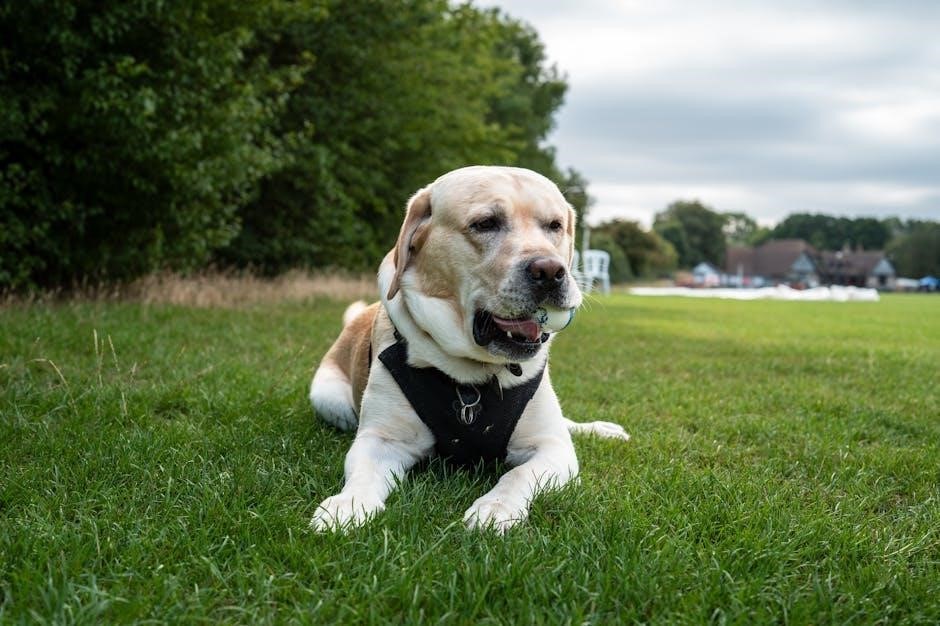The EZ Wiring Harness is a user-friendly solution designed for seamless vehicle wiring. Known for its universal compatibility, it simplifies installations with color-coded wires and durable construction, ensuring reliability and ease of use.

1.1 What is an EZ Wiring Harness?
An EZ Wiring Harness is a universal wiring solution designed for vehicles, offering a streamlined approach to electrical system installations. It features color-coded wires for easy identification and durable, high-quality materials to ensure reliability. The harness is pre-wired with essential circuits, making it ideal for various automotive projects, from classic car restorations to custom builds. Its universal compatibility allows it to fit multiple vehicle types, while the included instructions guide users through the installation process. This harness is engineered to simplify complex wiring tasks, providing a plug-and-play experience for enthusiasts and professionals alike.
1.2 Why Use an EZ Wiring Harness?
The EZ Wiring Harness is a preferred choice for its simplicity, efficiency, and reliability. Designed with universal compatibility, it fits various vehicle types, making it versatile for different automotive projects. Its color-coded wires ensure easy identification and installation, reducing the risk of errors. High-quality materials provide durability, ensuring long-lasting performance in challenging environments. The harness is pre-wired with essential circuits, saving time and effort during setup. Comprehensive coverage of circuits supports multiple electrical components, making it ideal for restorations, custom builds, and upgrades. Step-by-step instructions guide users through the process, catering to both novices and experienced enthusiasts. Overall, the EZ Wiring Harness offers a hassle-free, dependable solution for seamless electrical system installations, enhancing both convenience and performance.

Key Features of EZ Wiring Harness
The EZ Wiring Harness offers universal compatibility, color-coded wires for easy installation, and durable materials, ensuring a reliable and efficient electrical system setup;
2.1 Universal Compatibility
The EZ Wiring Harness is designed to offer universal compatibility, making it suitable for a wide range of vehicles, including classic cars, trucks, and modern models. Its adaptable design allows for easy installation across different makes and models, ensuring a seamless fit without the need for extensive modifications. This feature is particularly beneficial for DIY enthusiasts and mechanics, as it simplifies the process of upgrading or replacing existing wiring systems. The harness is engineered to work with various electrical configurations, providing flexibility and reliability for diverse automotive projects.
With its universal compatibility, the EZ Wiring Harness supports both classic and modern vehicles, making it a versatile choice for any wiring needs. Its GM color-coded wires and standardized components ensure consistency and ease of use, while the included fuse box and relay center enhance its adaptability. This makes it an ideal solution for projects requiring a durable and flexible wiring system.
2.2 Color-Coded Wires for Easy Installation

The EZ Wiring Harness features color-coded wires, designed to simplify installation by allowing users to quickly identify each wire’s purpose. This eliminates confusion and saves time, ensuring a smooth and efficient process.
With GM color-coded wires, the harness adheres to industry standards, making it easier for DIY enthusiasts and professionals alike to navigate the wiring system. The color-coding also helps in troubleshooting and maintaining the harness over time, ensuring long-term reliability and performance.
Crafted with GXL 125 high temp cross-linked polyethylene, the wires are resistant to grease, oil, gas, and acid, ensuring durability and reliability. This design enhances performance and longevity, making the harness a robust choice for various automotive projects.
2.3 Durable and High-Quality Materials
The EZ Wiring Harness is constructed using high-quality, durable materials to ensure long-lasting performance. The wires are made from GXL 125 high temp cross-linked polyethylene, which is resistant to grease, oil, gas, and acid, making them ideal for harsh automotive environments.
The harness is built to withstand extreme temperatures and vibrations, ensuring reliability in all driving conditions. The use of durable materials minimizes the risk of wear and tear, providing a dependable electrical system for your vehicle.
This focus on quality ensures that the EZ Wiring Harness remains a trusted choice for both DIY projects and professional installations, delivering consistent performance over time.

Pre-Installation Requirements
Pre-installation requires gathering tools, following safety guidelines, and understanding the wiring diagram. Proper preparation ensures a smooth and successful installation process.
3.1 Tools and Materials Needed

Before starting, ensure you have the necessary tools and materials. Essential tools include a socket set, screwdrivers, pliers, wire cutters, and cable ties. Materials needed are the EZ Wiring Harness, fuses, fuse holder, and electrical tape. Additional items like heat shrink tubing and a multimeter can be helpful for testing connections. Consult the wiring diagram and manufacturer’s instructions for specific requirements. Proper preparation ensures a smooth installation process and minimizes potential issues. Gather all components beforehand to avoid delays. Always follow safety guidelines and manufacturer recommendations for tools and materials. This step is crucial for a successful and safe installation of your EZ Wiring Harness.
3.2 Safety Precautions
Always prioritize safety when working with electrical systems. Begin by disconnecting the battery to prevent accidental power surges or shocks. Wear protective gloves and eyewear to avoid injuries. Be cautious with sharp tools and avoid damaging the wiring harness or vehicle components. Ensure proper ventilation and avoid working near open flames or sparks. Never force wires or connections, as this can cause damage. Keep the work area clean and well-lit to minimize hazards. Follow the manufacturer’s instructions and wiring diagrams carefully. Grounding the vehicle properly is essential to prevent electrical damage. Take regular breaks to maintain focus and avoid fatigue. Safety should never be compromised during installation.
3.4 Understanding the Wiring Diagram
Understanding the wiring diagram is crucial for a successful installation. It provides a visual representation of the harness layout, highlighting connections and components. Each wire is color-coded to simplify identification, ensuring proper connections. The diagram outlines the flow of power and signal paths, helping you avoid mismatches. Start by locating the main power wire, typically red, which connects directly to the battery. Ignition and accessory wires are usually pink or yellow, linking to the vehicle’s ignition system. Ground wires, often black, must be securely attached to metal surfaces. Refer to the diagram to identify fuses and relays, ensuring they are correctly placed. Follow the manufacturer’s instructions to avoid errors. Proper routing paths are indicated to prevent wire damage. This guide ensures every connection is accurate and safe, making the installation process straightforward and efficient.

Step-by-Step Installation Process
Begin by disconnecting the battery and removing tail light housings. Route the harness through the vehicle, connecting the main power wire to the battery. Hook up ignition and accessory wires, then install fuses and relays for proper circuit protection.
4.1 Disconnecting the Battery
Disconnecting the battery is the first critical step in the installation process. Locate the negative terminal on your vehicle’s battery and loosen the bolt holding the cable in place. Remove the negative cable from the terminal to ensure no power flows through the electrical system. This step is essential for safety, preventing any short circuits or accidental power surges. Always wear protective gloves and eyewear when handling batteries. Once disconnected, double-check that all vehicle lights and accessories are off to confirm the power is fully interrupted. This precaution ensures a safe working environment while installing the EZ Wiring Harness.
4.2 Removing the Tail Light Housings
Removing the tail light housings is necessary to access the wiring for installation. Start by locating the fasteners holding the housings in place on both the driver and passenger sides. Use a wrench or screwdriver to remove these fasteners and gently pull the housings away from the vehicle. Be careful not to damage any connectors or wires during removal. Once removed, set the housings aside in a safe place to avoid damage. This step provides clear access to the rear wiring system, allowing you to route the EZ Wiring Harness effectively. Ensure the area is clean and free of debris before proceeding.
4.3 Routing the Harness Through the Vehicle
Routing the EZ Wiring Harness through the vehicle requires careful planning to ensure proper installation. Begin by identifying the optimal path for the harness, typically along the existing wiring loom or chassis. Secure the harness using cable ties to prevent damage from heat or moving parts. Start with the largest coil of wires, as this will simplify the process. Avoid routing the harness near hot components like the engine or exhaust system. Use the provided cable ties to fasten the harness to existing wiring or frame members. Ensure the harness is neatly organized to maintain a clean installation. This step is crucial for ensuring the harness functions reliably and lasts for years to come.
4.4 Connecting the Main Power Wire
Connecting the main power wire is a critical step in the installation process. Identify the 10-gauge red wire, which serves as the primary power source for the harness. This wire should be connected directly to the positive terminal of the vehicle’s battery. Ensure the connection is secure and free from any corrosion. For GM vehicles, the red wire typically hooks directly to the battery post on the solenoid. Avoid routing this wire near high-heat areas or moving components to prevent damage. Once connected, double-check the wire’s placement and security to ensure reliable power distribution throughout the system. Proper connection of the main power wire is essential for the harness to function correctly.
4.5 Hooking Up the Ignition and Accessory Wires
After connecting the main power wire, focus on hooking up the ignition and accessory wires. Locate the ignition wire, typically pink in GM vehicles, and connect it to the ignition switch. This ensures the electrical system activates only when the ignition is turned on. For accessories like lights or radios, use the corresponding color-coded wires and attach them to the vehicle’s accessory circuits. Ensure all connections are secure and insulated to prevent short circuits. Avoid crossing wires near moving parts or heat sources. Double-check the wiring diagram to confirm proper connections. Once connected, test the ignition and accessories to ensure they function correctly. Proper wiring here ensures safe and reliable operation of the vehicle’s electrical systems.
4.6 Installing Fuses and Relays
Installing fuses and relays is a critical step to protect and control your vehicle’s electrical systems. Begin by identifying the fuse box location and ensuring all fuses match the amperage ratings specified in the wiring diagram. Gently insert each fuse into its designated slot, making sure it clicks securely into place. For relays, locate the appropriate mounting point and secure them using the provided hardware. Ensure the relay connections align with the wiring harness plugs. Avoid forcing fuses or relays, as this can cause damage. Once installed, double-check all connections to confirm they are snug and properly seated. This step ensures your electrical system operates safely and efficiently, preventing overloads and providing reliable power distribution throughout the vehicle.

Post-Installation Checks
After installation, test all electrical systems to ensure proper functionality. Verify wire connections are secure and use cable ties to organize the harness, preventing damage and ensuring reliability.
5.1 Testing the Electrical System
Testing the electrical system after installing the EZ Wiring Harness ensures all components function correctly. Start by reconnecting the battery and turning the ignition to the “on” position. Check each circuit, such as headlights, turn signals, and brakes, to confirm they operate without issues. Verify that all fuses are securely in place and that no blown fuses indicate a short circuit. Use a multimeter to test for proper voltage readings at key connection points. Additionally, inspect the ground wires to ensure they are clean and tightly fastened, as poor grounding can lead to electrical malfunctions. This step ensures your vehicle’s electrical system is safe and reliable.
5.2 Ensuring Proper Wire Connections
Ensuring proper wire connections is critical for the reliable operation of your vehicle’s electrical system. Start by visually inspecting all connections for tightness and cleanliness. Use a multimeter to test for continuity and resistance, ensuring no short circuits or open connections exist. Verify that all wires are securely fastened with cable ties to prevent chafing or damage. Double-check that color-coded wires match their corresponding functions, as indicated in the wiring diagram. Avoid over-tightening connectors, as this can damage the terminals. Finally, ensure all grounds are clean and properly attached to the vehicle’s chassis. Proper connections guarantee optimal performance and safety, minimizing the risk of electrical failures. Regular inspections and maintenance are essential to uphold these standards.
5.3 Securing the Harness with Cable Ties
Securing the EZ Wiring Harness with cable ties is essential for maintaining organization and protecting the wires from damage. Start by routing the harness through the vehicle, ensuring it is away from moving parts and heat sources. Use high-quality cable ties to fasten the harness to existing mounting points or frames. Avoid over-tightening, as this can damage the wires or the harness. Secure the harness at regular intervals to prevent sagging or chafing. Leave the three cable ties closest to the fuse panel intact, as they are pre-installed for proper routing. This step ensures the harness remains stable, reducing the risk of electrical issues and prolonging its lifespan. Regular inspections of the cable ties are recommended to ensure they remain secure and functional.

Common Issues and Troubleshooting
Common issues include faulty connections, power fluctuations, and ground wire problems. Troubleshooting involves checking connections, ensuring proper wire routing, and verifying the integrity of all components and ties.
6.1 Identifying Faulty Connections
Identifying faulty connections is crucial for troubleshooting. Start by visually inspecting all wire connectors for signs of damage, corrosion, or loose fits. Use a multimeter to test continuity between connected points. If a connection shows no continuity, it may be faulty. Additionally, check for any unintended short circuits, which can cause power issues. Pay special attention to the harness near the fuse panel, as removing cable ties here can lead to misaligned wires. Consult the wiring diagram to ensure all connections match the recommended configuration. Addressing these issues promptly prevents further electrical problems and ensures reliable system performance;
6.2 Resolving Power Issues
Power issues are often caused by faulty connections or improper wire routing. Start by checking the main power wire connected to the battery and ignition. Ensure all connections are secure and free from corrosion. If the harness lacks power, verify the ignition and accessory wires are correctly linked. Consult the wiring diagram to trace power sources. Use a multimeter to test voltage at key points, ensuring no shorts or open circuits. Proper grounding is essential; a loose ground wire can disrupt power flow. If issues persist, inspect the harness for damage or misconnected wires. Addressing power problems early prevents system failures and ensures reliable performance.
6.3 Fixing Ground Wire Problems
Ground wire issues can cause electrical system malfunctions. Start by inspecting the ground wire for corrosion or damage. Disconnect the battery and locate the ground wire, typically connected to the vehicle’s chassis. Use a multimeter to test continuity between the ground wire and chassis. If no continuity is found, clean or replace the ground wire. Ensure all connections are tight and free from rust. Proper grounding is critical for the harness to function correctly. If issues persist, check for loose or corroded connections elsewhere in the system. A faulty ground wire can lead to erratic electrical behavior, so addressing it promptly is essential for reliable operation.

Maintenance and Upkeep
Regular inspections ensure the EZ Wiring Harness remains in optimal condition. Clean the harness, check for wear, and protect it from environmental factors to maintain durability and reliability.
7.1 Regular Inspection of Wires
Regular inspection of the EZ Wiring Harness is crucial to ensure optimal performance and longevity. Begin by visually examining all wires for signs of damage, such as cuts, frays, or corrosion. Check connections for looseness or corrosion, as these can disrupt electrical flow. Pay attention to areas exposed to heat, moisture, or mechanical stress, as these are prone to wear. Use a multimeter to test for continuity and insulation resistance if issues arise. Clean the harness periodically to remove dirt and debris that may compromise functionality. Always refer to the wiring diagram for specific circuits and ensure no wires are pinched or improperly routed. Regular maintenance helps prevent faults and ensures reliable operation.
7.2 Cleaning and Protecting the Harness
Cleaning and protecting the EZ Wiring Harness is essential to maintain its performance and longevity. Use a mild detergent and water to gently wipe away dirt, grime, or grease from the wires and connectors. Avoid harsh chemicals or abrasive materials that could damage the insulation. Once clean, allow the harness to air dry completely before reconnecting it to the vehicle’s electrical system. Apply a protective spray or silicone-based lubricant to shield the wires from moisture and corrosion. Regular cleaning prevents deterioration and ensures reliable electrical connections. For added protection, consider using heat-resistant sleeves or wrap for sections exposed to high temperatures. This maintenance routine helps extend the harness’s lifespan and prevents potential failures.
7.3 Updating or Replacing Components
Updating or replacing components in your EZ Wiring Harness ensures optimal performance and adaptability. Start by disconnecting the battery to prevent electrical shocks or damage. Use the provided wiring diagram to identify the specific component needing attention. For replacements, ensure compatibility by purchasing parts directly from the manufacturer or authorized dealers. When handling connectors or terminals, use appropriate tools to avoid damage. After installing new components, test the system thoroughly to confirm proper functionality. Regularly updating or replacing worn-out parts enhances reliability and prevents potential electrical failures. Always follow the manufacturer’s guidelines for compatibility and installation to maintain the harness’s integrity and performance over time.
The EZ Wiring Harness simplifies vehicle wiring with its universal design and color-coded system, ensuring a reliable and efficient installation process for any automotive project or upgrade.
8.1 Benefits of Using an EZ Wiring Harness
The EZ Wiring Harness offers universal compatibility, making it suitable for various vehicles and applications. Its color-coded wires simplify installation, reducing errors and saving time. Built with durable, high-quality materials, it ensures long-lasting reliability. The harness is designed for ease of use, featuring a plug-and-play system that minimizes complex wiring. Additionally, its pre-terminated ends and organized structure streamline the process, reducing the risk of short circuits. These features make it an ideal choice for both professionals and DIY enthusiasts, providing a hassle-free experience and ensuring optimal performance for any electrical system setup.
8.2 Final Tips for a Successful Installation
For a successful EZ Wiring Harness installation, always disconnect the battery first to ensure safety. Use cable ties to secure the harness neatly, avoiding damage from abrasion. Do not remove the three cable ties closest to the fuse panel, as they are essential for proper routing. Start with the largest coil of wires to simplify organization. Double-check all connections and ensure they are tight and secure. Refer to the wiring diagram for clarity and avoid guessing. Test the electrical system thoroughly before finalizing the installation. Proper planning and attention to detail will ensure a smooth and reliable setup.
